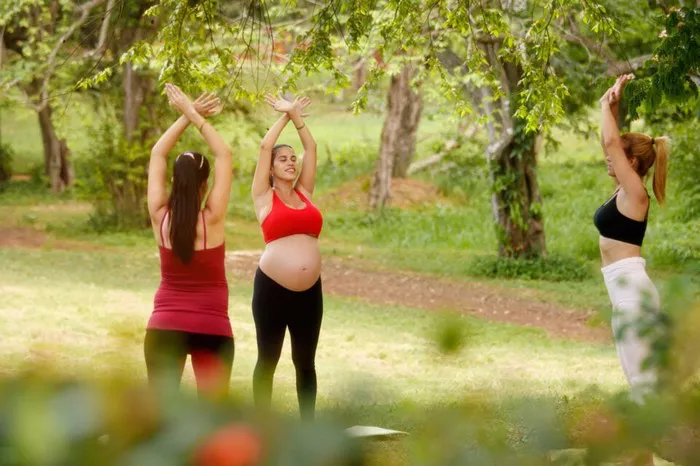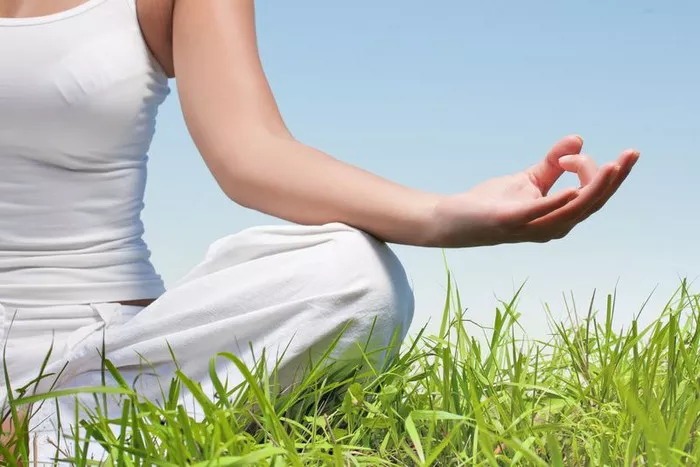The Cat-Cow stretch, often referred to as “Marjaryasana-Bitilasana” in Sanskrit, is one of the most fundamental movements in yoga. It’s a dynamic and fluid sequence that involves moving between two positions: the cat pose (Marjaryasana) and the cow pose (Bitilasana). This stretch not only improves spinal flexibility but also enhances the health of the entire body. In this article, we will explore the benefits of the Cat-Cow stretch, how to properly perform it, and most importantly, how many times you should do the Cat-Cow stretch to achieve maximum benefits.
Understanding the Cat-Cow Stretch
The Cat-Cow stretch is a simple yet effective sequence of movements that gently warms up the spine and increases flexibility. It is often included in yoga routines to stretch the back, neck, and torso while promoting balance and alignment throughout the body.
In the Cat pose, the back is rounded, the belly is pulled toward the spine, and the head is dropped toward the floor. In contrast, the Cow pose involves arching the back, lifting the chest, and tilting the pelvis upwards while looking ahead or slightly upwards. This movement sequence helps to mobilize the spine in both directions, facilitating greater flexibility and reducing stiffness.
The Benefits of the Cat-Cow Stretch
Before we dive into how many times you should perform the Cat-Cow stretch, it’s important to first understand the multiple benefits this movement offers.
Increases Spinal Flexibility
The Cat-Cow stretch is an excellent way to increase the flexibility of the spine. It involves forward and backward bending of the spine, allowing it to stretch and compress in a controlled manner. This movement enhances the range of motion in the vertebral column and can help alleviate stiffness.
Improves Posture
The Cat-Cow stretch encourages proper alignment and posture. It helps activate key muscles in the back, shoulders, and neck, which can improve overall posture. By regularly practicing this stretch, you can counteract the effects of slouching and poor posture, which are common among those who spend long hours sitting.
Relieves Tension in the Back and Neck
The Cat-Cow stretch is particularly beneficial for relieving tension and tightness in the back and neck. Many people experience discomfort in these areas due to stress or prolonged sitting. The movement helps to release built-up tension and promote relaxation in these muscle groups.
Enhances Breath Awareness
This yoga sequence encourages mindful breathing. In the Cow pose, you inhale as you arch your back, and in the Cat pose, you exhale as you round your back. This rhythmic breathing helps to connect movement with breath, which is a fundamental principle of yoga practice.
Stimulates Digestive Organs
The Cat-Cow stretch involves a gentle twisting and compression of the abdomen, which can stimulate the digestive organs. This can be especially beneficial for those who experience digestive discomfort, bloating, or constipation.
Boosts Circulation and Energy
The fluid movement between the Cat and Cow poses helps improve circulation throughout the body. Increased blood flow to the spine and surrounding muscles can help enhance overall energy levels, leaving you feeling more invigorated and balanced.
How to Perform the Cat-Cow Stretch
To ensure you are getting the most out of the Cat-Cow stretch, it’s crucial to practice proper form. Below are the step-by-step instructions for performing the Cat-Cow stretch:
Start in a Tabletop Position
Begin on your hands and knees in a neutral tabletop position. Your wrists should be directly beneath your shoulders, and your knees should be directly beneath your hips. Spread your fingers wide for stability, and make sure your spine is long and neutral.
Enter Cow Pose (Bitilasana)
As you inhale, gently arch your back by lifting your tailbone toward the ceiling and allowing your belly to drop towards the floor. Open your chest and draw your shoulder blades down and back. Look slightly upward, but do not overextend your neck. This is the Cow pose.
Transition to Cat Pose (Marjaryasana)
As you exhale, round your back by tucking your tailbone and drawing your belly button toward your spine. Allow your head to drop towards the floor, creating a rounded shape in your spine. This is the Cat pose.
Repeat the Sequence
Move between the Cat and Cow poses in a smooth, flowing motion, coordinating the movement with your breath. Inhale to move into Cow pose and exhale to move into Cat pose. Continue this for several rounds.
End in a Neutral Spine
After completing your desired repetitions, return to a neutral tabletop position and rest for a few breaths.
How Many Times Should You Do the Cat-Cow Stretch?
Now, let’s address the core question: How many times should you do the Cat-Cow stretch to experience its full benefits?
There is no one-size-fits-all answer to this question, as the frequency and number of repetitions will depend on your personal goals, flexibility, and experience with yoga. However, there are some general guidelines that can help you determine the appropriate number of repetitions for your practice.
1. Daily Practice for General Flexibility and Spinal Health
For overall flexibility, mobility, and spinal health, it’s recommended to practice the Cat-Cow stretch daily. Doing the stretch for 5 to 10 minutes a day, with 10-20 repetitions per session, is ideal for maintaining a healthy spine and improving flexibility over time. You can also incorporate this stretch into your warm-up routine before more intense yoga practices or other workouts.
2. For Beginners: Start Slow
If you are new to yoga or have limited flexibility, it’s best to start with a smaller number of repetitions. Begin by performing the stretch for 3-5 minutes, completing 5-10 repetitions. Gradually increase the duration and number of repetitions as your body becomes more accustomed to the movement.
3. For Pain Relief or Tension Release
If you are using the Cat-Cow stretch specifically to relieve tension in the back, neck, or shoulders, you can do it more frequently throughout the day. For example, you can perform 5-10 repetitions several times a day, especially if you’re experiencing discomfort from sitting at a desk for long periods or dealing with stress. The fluid motion of the stretch can help release built-up tension and improve circulation.
4. As Part of a Longer Yoga Practice
For those practicing yoga regularly, the Cat-Cow stretch can be a great addition to your yoga flow. It’s often included in vinyasa or hatha yoga classes as a warm-up to prepare the body for more complex poses. In such a practice, you may repeat the Cat-Cow sequence for 5 to 10 rounds, depending on the length of your session.
5. For Deepening Your Practice
Advanced practitioners may want to explore deeper variations of the Cat-Cow stretch. They might choose to hold each position for longer periods or incorporate other movements (such as spinal twists or side stretches) between the Cat and Cow poses. For such advanced practices, aim for 15-20 repetitions, focusing on both the quality of the movement and breath awareness.
Listening to Your Body
While general recommendations can be helpful, the most important factor in determining how many times you should perform the Cat-Cow stretch is to listen to your body. Yoga is a deeply personal practice, and it’s essential to tune into how your body feels each day. If you’re feeling tightness or discomfort, don’t push yourself too hard. Likewise, if you feel energized and open, feel free to do more repetitions.
Other Considerations
Breath Awareness: As with all yoga poses, it’s important to coordinate your breath with your movement. Inhale deeply as you move into the Cow pose, and exhale fully as you transition into the Cat pose. The connection between breath and movement is essential to the benefits of the Cat-Cow stretch.
Mindfulness: Take the time to truly feel the movement in your spine and body. This stretch is not just about the physical postures but also about cultivating mindfulness and awareness of your body’s sensations.
Adaptations for Injuries or Limitations: If you have an injury or specific health condition, you may need to modify the Cat-Cow stretch. For example, if you have a sensitive neck, avoid looking up in the Cow pose. If you have knee issues, consider padding your knees or using props for support.
Conclusion
The Cat-Cow stretch is an excellent tool for improving spinal health, flexibility, and overall body awareness. While there is no strict rule for how many times you should perform this stretch, incorporating it into your daily routine for 5-10 minutes can have profound benefits for your body. Whether you are new to yoga or a seasoned practitioner, the Cat-Cow stretch is a versatile and accessible movement that can be tailored to suit your needs. By practicing regularly and listening to your body, you can experience the many physical and mental benefits of this dynamic yoga stretch.
Related Topics:























